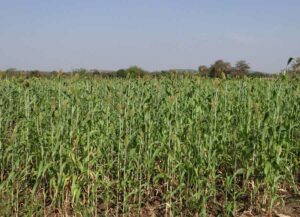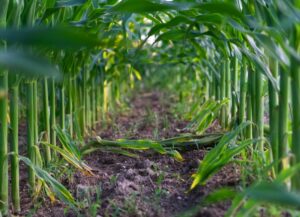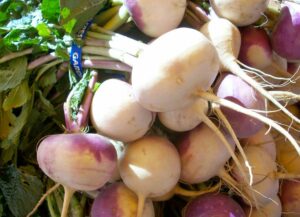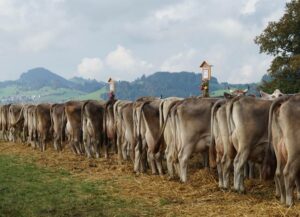Fernando Diaz
Triticale (× Triticosecale) is a hybrid of wheat (Triticum) and rye (Secale) developed during the late 19th century. This cereal combines the grain quality, productivity, and disease resistance of wheat with the vigor and hardiness of rye. As forage, it is typically grown in the fall-winter season in double-cropping production systems. When triticale is harvested at the dough stage of maturity (9.0 – 15.0% protein), it is a good forage source for dry cows and replacement heifers. However, triticale may be a good forage for lactating cows if this is harvested at boot stage (more than 15.0% protein).
A study carried out in a commercial Holstein farm from San Juan de los Lagos, state of Jalisco, Mexico, evaluated the effects of replacing alfalfa hay partially or totally with triticale hay in high-producing dairy cow diets. Triticale was planted as a winter crop after corn in November using a seeding rate of 125 kg/ha. The authors (Santana et al., 2019) selected the variety TCL-08 Bicentenario because of its high yield, regrowth capacity, and steady performance. Triticale forage was cut at day 69 at the boot stage of maturity when the flag leaf was fully emerged, but no seed heads.
The researchers evaluated three low-forage diet (42.0% forage) containing 25.9% corn silage in a dry matter (DM) basis plus either 15.0% DM alfalfa hay, 16.4% DM triticale hay or a combination of 9.0% DM alfalfa hay/7.4% DM triticale hay. Protein (18% DM) and energy (1.64 Mcal/kg) content in the diets were similar; however, non-fiber-carbohydrate (NFC) concentration was slightly lower (1.0 – 1.6 percentage units) in the diet containing triticale as the only hay.
Table below reports nutrient composition in both hays. Compared with alfalfa hay, triticale hay shows lower protein and CNF content and greater fiber and lignin concentration. As result, triticale hay was less energetic than alfalfa hay.
| Nutrient | Triticale Hay | Alfalfa Hay |
| Dry Matter (FM) % | 88.8 | 89.6 |
| Crude Protein (% DM) | 18.5 | 20.7 |
| NDF (% DM) | 53.0 | 38.9 |
| ADF (% DM) | 34.3 | 32.8 |
| CNF (% DM) | 13.5 | 25.2 |
| Lignin (% DM) | 4.5 | 8.5 |
| Ash (% DM) | 12.1 | 11.7 |
| NEL (Mcal/kg) | 1.47 | 1.54 |
Milk production declined linearly by including triticale in the diets (from 37.7 to 36.3 kg/day). However, the authors did not observe effect on energy-corrected-milk yield (39.7 kg/day) because of a compensatory linear effect of increasing milk fat concentration with the inclusion of triticale in the diet (from 3.83 to 3.92%).
On the other hand, milk protein content (from 3.23 to 3.20%) and yield (from 1.22 to 1.19 kg/day) were gradually reduced by incorporating triticale in the diets. Nevertheless, intake (23.2 kg DM/day) and feed efficiency were not altered by forage type.
With a yield of 5.7 tons of DM of triticale hay per ha, the researchers estimated on-farm production costs of $0.08/kg DM of hay compared with $0.18/kg of DM for the alfalfa hay. Therefore, ration cost decreased noticeably by $0.2 and $0.4/cow/day when alfalfa hay was partially or totally replaced with triticale hay, respectively.
In conclusion, under the conditions of this study, triticale hay harvested at boot stage is a viable option to replace alfalfa hay in diets of high-producing cows.
Reference
I. Santana, J. J. Olmos-Colmenero, and M. A. Wattiaux. 2019. Replacing alfalfa hay with triticale hay has minimal effects on lactation performance and nitrogen utilization of dairy cows in a semi-arid region of Mexico J. Dairy Sci. 102:8546–8558.
© 2019 Dairy Knowledge Center, LLC. All Rights Reserved.











